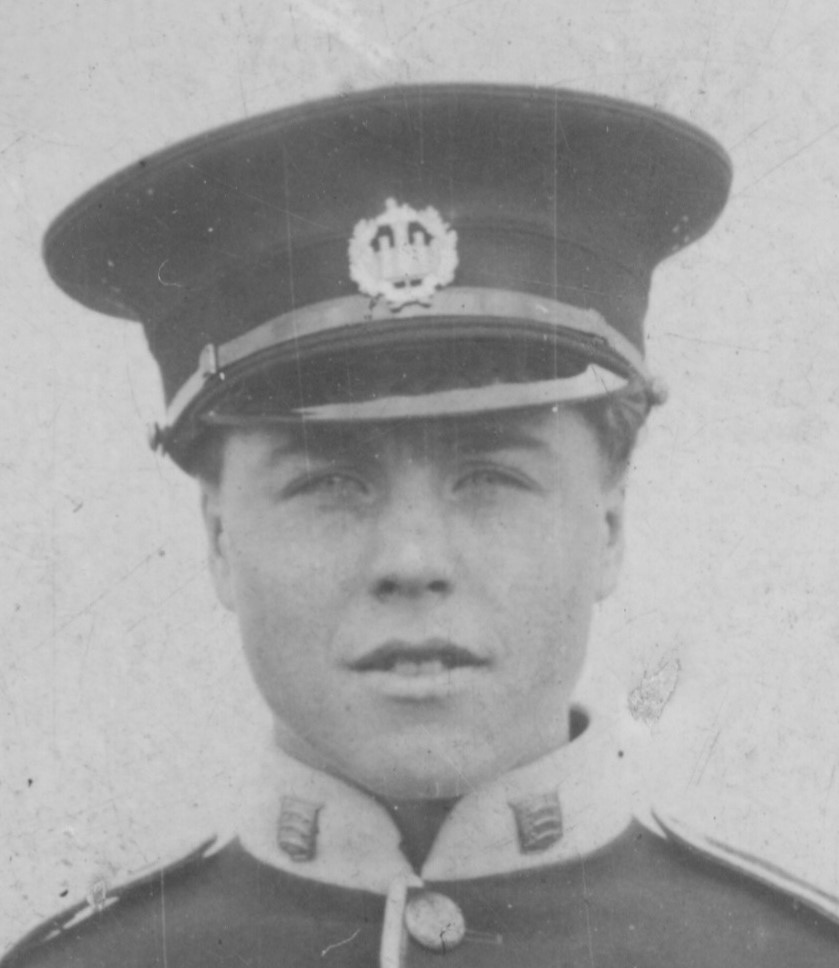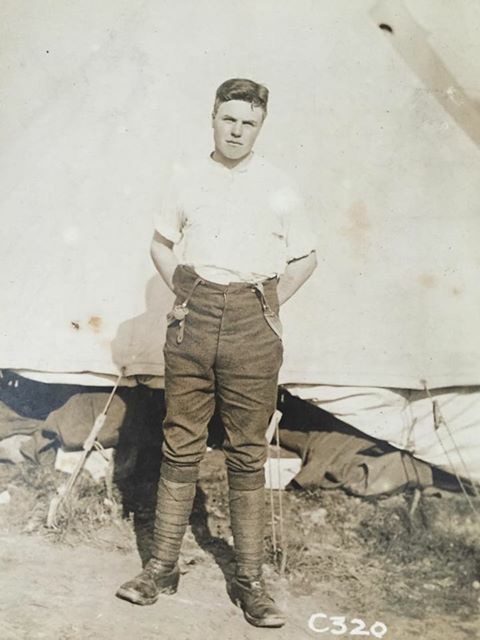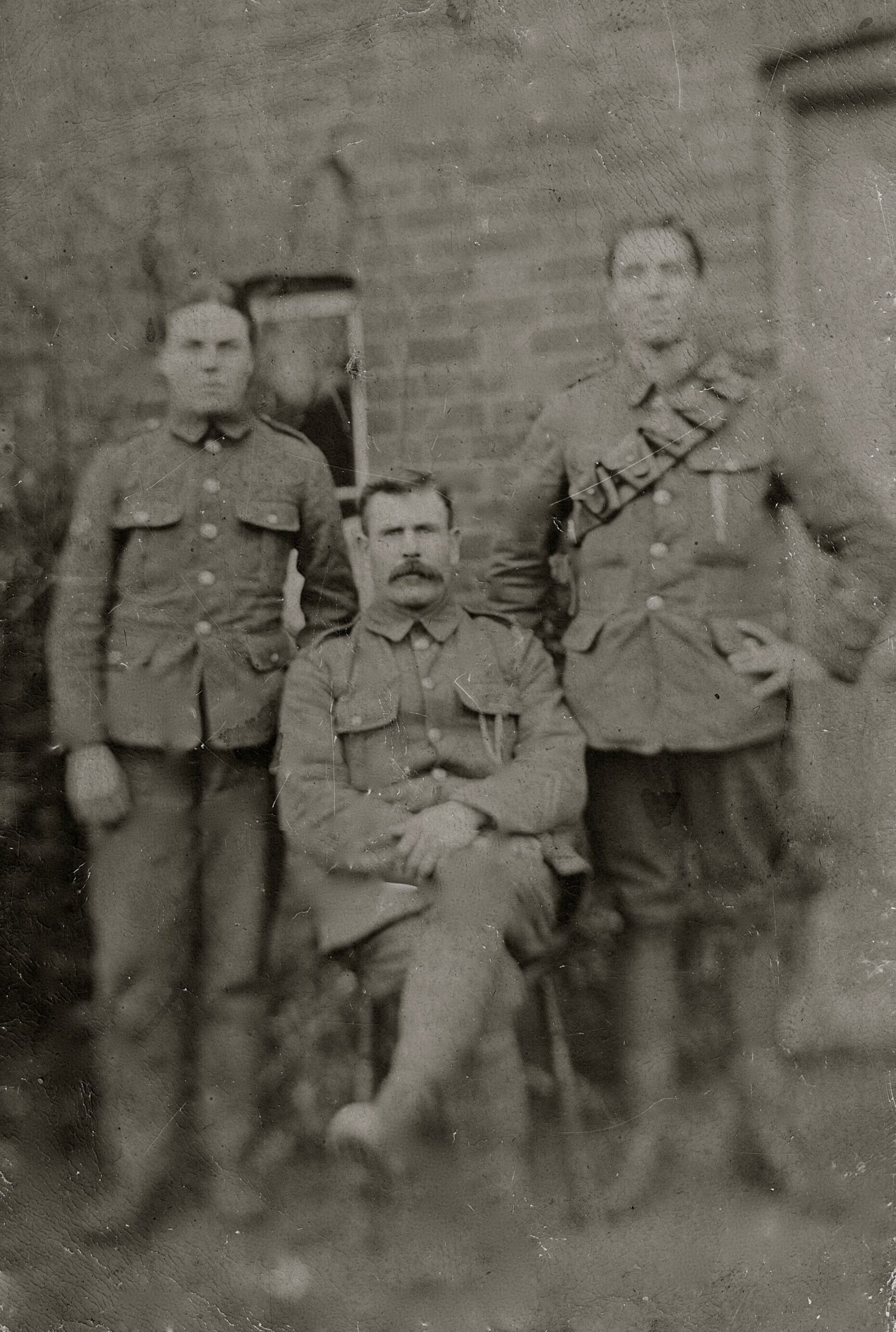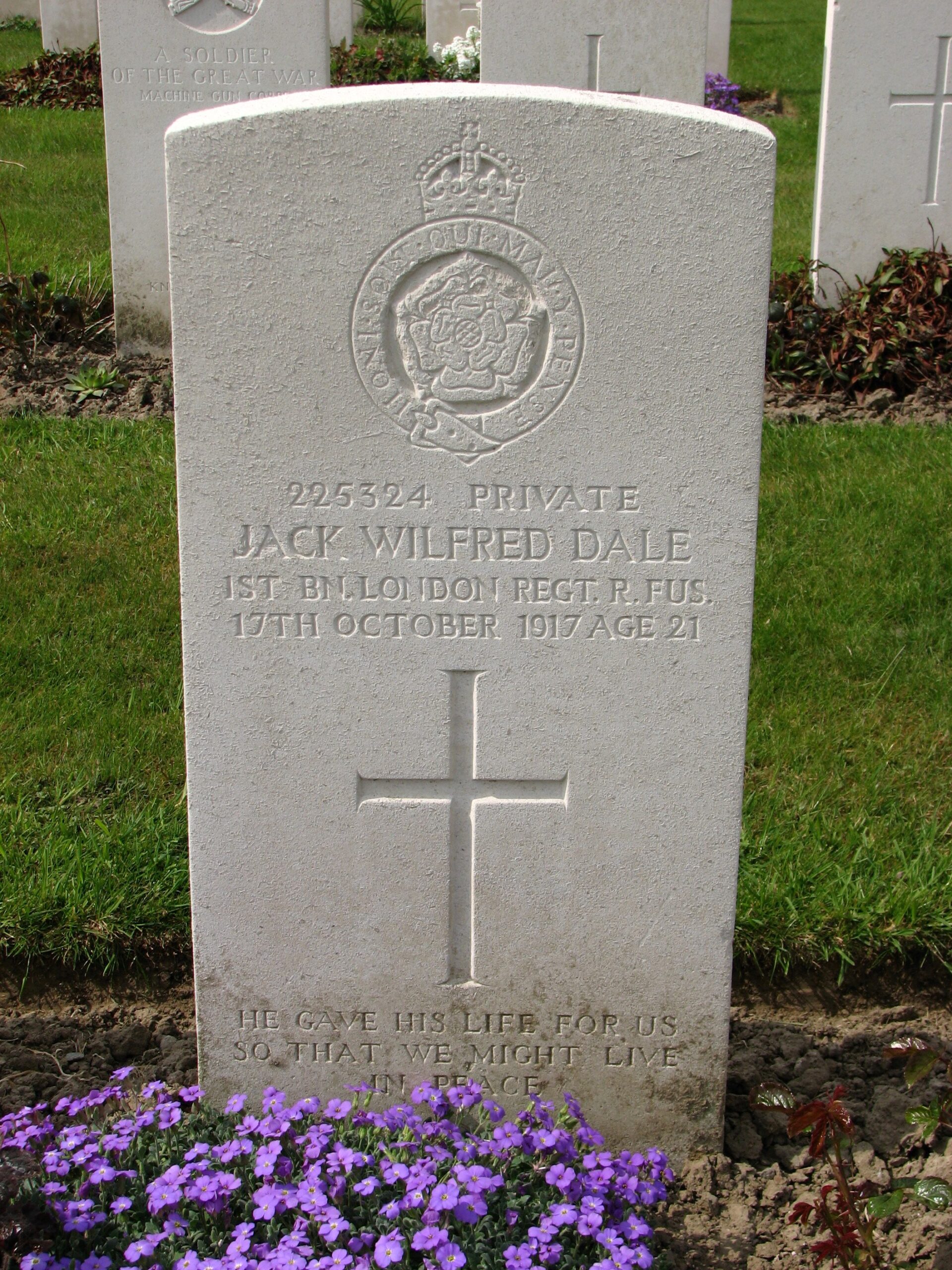Jack Dale (1898 - 1917)
A pre- war Territorial soldier, Jack was mobilised upon the outbreak of war in August 1914. Initially too young to serve overseas, he was not sent to France until 1917. Jack was killed during the Third Battle of Ypres, aged 19.
- 30
- Died in the Great War
- 51.972047, 1.059723
Details
| Name: | Jack Wilfred Dale |
| Service: | British Army |
| Unit: |
11th Battalion, Royal Fusiliers 1The Commonwealth War Graves Commission (CWGC) records – and consequently Jack’s headstone – – incorrectly state that Jack was serving with the 1st Battalion of the London Regiment (Royal Fusiliers) – this is a different regiment to the Royal Fusiliers. In recent years, the CWGC are “hedging their bets” and now also state that Jack was attached from the London Regiment – to 11th Battalion, Royal Fusiliers. |
| Regimental Number: | 225324 |
| Rank: | Private |
| Date of Death: | 17th October 1917 |
| Age: | 19 |
| Buried: | Grave 29, Row E, Plot XII, Cement House Cemetery, nr. Ieper (Ypres), Belgium |
Family Background and Early Life
Jack Dale was born in Holbrook on 31st January 1898, the second of seven children born to Abram and Annie Dale.
Abram Dale was a Farm Labourer who was originally from Tattingstone and in 1893 he married Annie Parker, from Ashfield in Suffolk. When Jack was still a toddler, the family – which by this time included a daughter called May – moved to Norfolk. There, they lived initially at Burnham Thorpe, before moving to Heacham, near Hunstanton.
In the summer of 1912, the family moved back to south Suffolk, this time to Holly Cottages at East End. Abram Dale had been visiting his elderly parents in Tattingstone and made enquiries about working at the British Xylonite factory at Cattawade. Abram was offered a job and with it came a tied cottage in Holly Cottages. The following year, Jack also got a job at the Factory.
Territorial Force
At some point prior to August 1914, Jack volunteered to join the volunteered to join the Essex Regiment of the Territorial Force at Manningtree. 2 The Territorial Force was the predecessor of the Territorial Army. The minimum age to join the Territorial Force was 17, one year younger than the minimum age limit for the Regular Army. Jack did not reach his 17th birthday until January 1915, but was called up. Technically, Jack was under the minimum age of 17 at the time that he joined, however, this may well be explained by the fact that he played the Bugle: There was a “clause” in the Regulations that allowed Special Enlistments in the Territorial Force, for boys aged 14 to 16 to join – with their parents’ permission – as a “bandsman”. 3 The Dales were a musical family and are believed to have been in the Salvation Army.
Jack was “called up” as part of the Territorial Mobilisation of the Army on 5th August, the day after Great Britain declared war on imperial Germany, following the latter’s invasion of neutral Belgium.
Following the declaration of war, most men of military age in the Territorial Battalions volunteered for service overseas. However, this did not include Jack as at this time a soldier had to be at least 19 years old to serve overseas in a theatre of war. Jack was only 16. As a result, Jack would spend the best part of three years engaged in home defence duties.
In November 1914, Jack’s father Abram volunteered to join the Suffolk Regiment. Jack’s elder brother, William was a pre-War Regular who had been serving in India when war broke out. He was brought back and served on the Western Front. Both Abram and William survived the War. 4 Abram Dale disembarked in France on 30 May 1915 and served for over ten months on the Western Front with 7th Battalion of the Suffolk Regiment. During that time he would have taken part in the Battle of Loos. Abram was returned to the UK in April 1916 – possibly for medical reasons – and was transferred to the Royal Fusiliers. Abram was honourably discharged on medical grounds reasons in May 1917, just before Jack was sent to France.
It is interesting to note that neither Jack’s father nor his brother are commemorated on the Roll of Honour listing those “East Bergholt Men Who Served In The War Of 1914 To 1919”.
Unfortunately, we don’t know much about Jack’s service in the U.K. between August 1914 and May 1917, but he was with the 2/5th Battalion of the Essex Regiment who at one point, were based near Harrogate in Yorkshire. Whilst there Jack was able to meet up with his sister May, who was in service nearby in Bridlington. Many years later, May wrote that “Jack and I had always been so close as brother and sister. He was such a kind lad”. 5 In 1922, Jack’s sister May married Walter Peartree, from White Horse Road. During the War, Walter had served with the Royal Field Artillery in Salonica. Whilst there, contracted Malaria which in 1919 resulted in an honourable discharge from the Army on medical grounds. Walter and May lived in East Bergholt for the rest of their lives. Walter died in 1973 and May died in 1980. Both are buried in East Bergholt Cemetery.
Marriage
On 30th May 1917, Jack married Eliza Goldstone at Bedford Register Office. 6 Both Jack and Eliza declared at the time of their marriage that they were 21. In fact, Eliza was 20 and Jack just 19. At that time, 21 was the minimum age that a person could get married without parental consent. Eliza was a Munitions Worker who was originally from Barking in Essex, but at that time living in Bedford.
Just over two weeks later – on 16th June – Eliza gave birth to a son, who she called Jack. The elder Jack almost certainly never saw his namesake: He had been posted to France and disembarked there on the day of young Jack’s birth.
France and Flanders
Jack spent 3 weeks at a training camp, before being posted to the 11th Battalion of the Royal Fusiliers, as part of a draft of reinforcements of 80 Other Ranks. From 1916 onwards, it had become common for an infantry soldier to be transferred to another regiment upon arrival in France.
At the time that Jack joined the Battalion, they were in a camp at Dickebusch, 4 miles south-west of the Belgian city of Ypres, conducting training. 7 Dickebusch was situated a few miles behind the front for most of the war and was used as a billeting area for units close to the front, but not actually in the trenches. In addition to training, on many nights the Battalion were also called upon to furnish working parties who carried stores and ammunition to the front, as well as helping to bury telephone and signalling cable.
On 31st July 1917, the first day of the British offensive now known as the Third Battle of Ypres (or more commonly, Passchendaele), the 11th Royal Fusiliers were positioned just in front of the village of Zillebeke. Though they suffered some casualties from German gas-shelling, they did not actually advance to the attack due to the failure of the division in front.
After five days back around Dickebusch, the Battalion again moved up to the front line on 7th August. Three days later they took part in an unsuccessful attack against Inverness Copse and Glencorse Wood suffering heavy casualties.
For the next two months the 11th Royal Fusiliers were located far behind the front lines, engaged in training. In early October they moved closer to the Front and continued their training in the area just west of the town of Poperinghe. 8 The Belgian town of Poperinghe was the main supply base for the Ypres Salient. It was also an important centre for resting troops away from the front-line areas, and for casualty clearing stations. Most troops going to and from the Salient went through “Pop” as it was nicknamed by the soldiers. The Offensive was still ongoing, and the Battalion were about to be committed to the Battle again.
They moved up to the forward area on 15th October before going into the support trenches the following day. That evening, the 11th relieved another battalion in the front-line trenches around the village of Poelcappelle. The very next day, Jack and 3 others were killed. He was 19 years old.
The bodies of Jack, and his 3 comrades who had been killed that same day were buried near their Support Line.
Postscript
In September 1919, the bodies of Jack and his comrades were exhumed from their field graves and reburied nearby in one of the permanent cemeteries then being established by the Imperial War Graves Commission. 9 In 1960, the Imperial War Graves Commission was renamed the Commonwealth War Graves Commission. Jack’s body was identified by his identity disc. Jack and his comrades now rest side by side in Cement House Cemetery just outside the village of Langemarck.
Abram and Annie Dale left East Bergholt moved to Hunstanton in Norfolk, at some point after 1921.
Eliza Dale returned to Barking; she never remarried and is believed to have died in 1974 at the age of 77. She was pre-deceased by her son Jack, who is believed to have died in 1943 at the age 26.
Acknowledgements
I am very grateful to Clare McCall – Jack’s Great Niece – for kindly sharing her family history and photographs.
Copyright © Mark Ashmore, 2024
- 30
- Died in the Great War
- 51.972047, 1.059723






